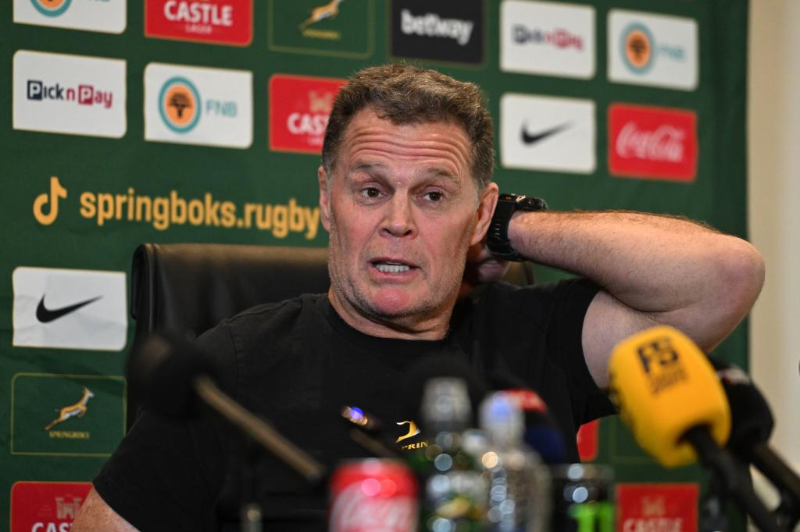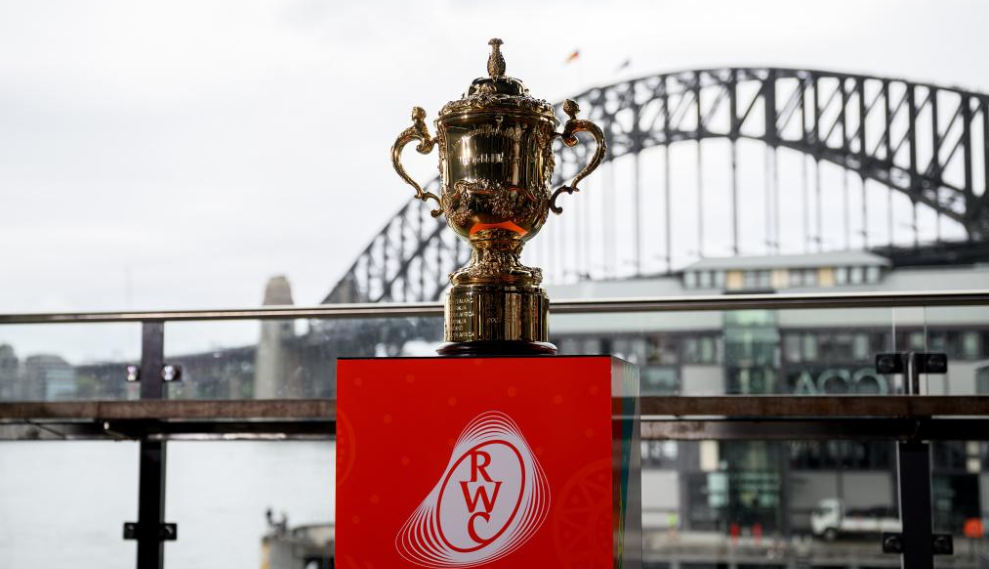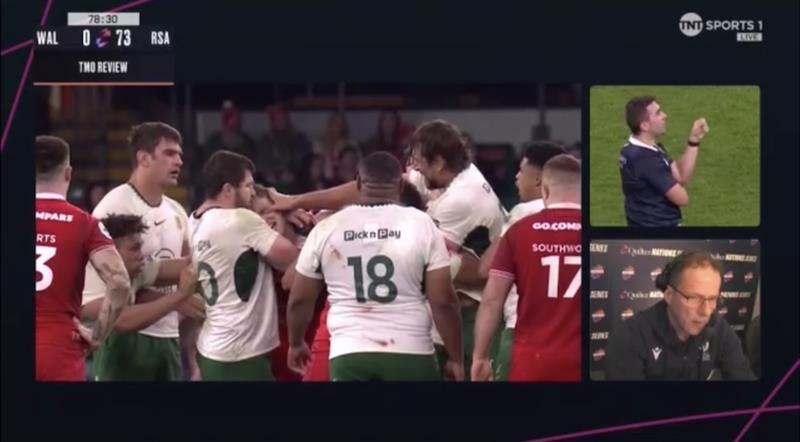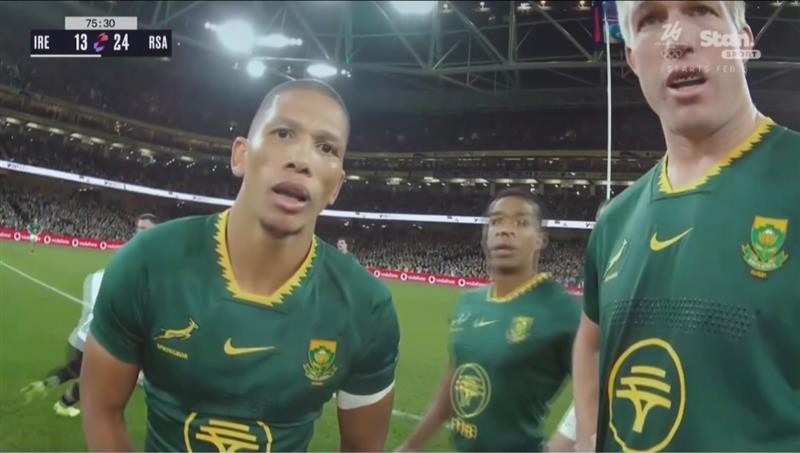The context: Durban, September, and the Boks’ psychology
Hollywoodbets Kings Park is no stranger to heavy rugby. The sea air is thick, the ball sweats, and the crowd comes in waves of green jerseys that turn the place into a cauldron. It’s the kind of venue where the Springboks have historically doubled down on identity: big men, big collisions, and just enough cunning in the backline to make teams wilt.
This week is no different. The All Blacks have just been shredded 43-10 in Wellington – the kind of statement win that makes foreign coaches reach for painkillers – and Argentina now walk into the teeth of the South African machine. The Rugby Championship table is a knife-edge, but the Boks suddenly look like the team with momentum and the aura.
Rassie Erasmus has seen all this before. He doesn’t chase style points. He builds momentum, then keeps it rolling like a tank down a gravel road. And when he named his team for Saturday, it wasn’t about covering injuries or sticking names on jerseys. It was a message:
“This is who we are. This is how we’ll beat you. And this is how we’ll keep building for 2027.”

Continuity as a weapon: the forward pack
The front row
1 Ox Nche, 2 Malcolm Marx, 3 Thomas du Toit.
If the Wellington Test was a warning shot, then keeping this exact trio is Rassie saying: “The scrum is our blunt instrument. You can see it coming, you can prepare for it, but you still can’t stop it.”
Ox has been the best loosehead in the Championship so far, plain and simple. Marx’s throwing has been sharp, his carrying brutal. Du Toit has returned to Durban as a local boy turned enforcer, and Rassie knows how symbolic it is to put him down in the front row at Kings Park. This is not rotation. This is intimidation by familiarity.
The engine room
4 Eben Etzebeth, 5 Ruan Nortje.
Etzebeth is back – and that alone changes the psychology of the game. Argentina know what it means when the great man stares down their lineout. Nortje’s inclusion alongside him is about balance. Etzebeth is the hammer; Nortje is the scaffolding, the man who makes the lineout tick. With Lood de Jager injured, this pairing says: “We’re not patching holes. We’re selecting dominance.”
The back row
6 Siya Kolisi (c), 7 Pieter-Steph du Toit, 8 Jasper Wiese.
The trifecta that screams Bok DNA. Kolisi is the heartbeat – captain, scavenger, public soul of the team. PSDT is the machine, part-man part-industrial-harvester, tackling until opponents cry uncle. And Wiese, back to his snarling best, is the gainline insurer.
Rassie could have benched Kolisi, citing rest. He could have thrown Kwagga into the mix. He didn’t. Why? Because this is Durban. Because Argentina respect Kolisi as a figure, not just as a flanker. Because the optics of dropping your captain after a 43-10 massacre are nonsensical. This is a leadership statement as much as a tactical one.
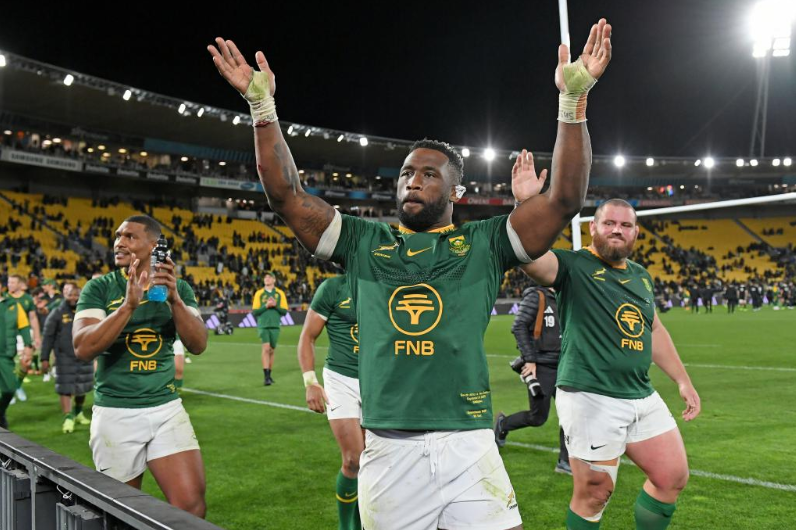
The backline: balance, daring, and the Willemse gamble
The halfbacks
9 Cobus Reinach, 10 Sacha Feinberg-Mngomezulu.
Reinach isn’t just quick service – he’s tempo. Against Argentina, who thrive in chaos, Reinach is the insurance that South Africa can impose rhythm.
And then there’s Sacha. Rassie has planted his flag. Feinberg-Mngomezulu at 10 is not an experiment anymore. It’s intent. Rassie is telling the world: “This kid is our future, and you’d better start game-planning for him now.”
Could Manie Libbok have started? Absolutely. His running game was lethal against the All Blacks, and his tactical kicking acutely hurt the Kiwis. But Libbok on the bench in KwaZulu-Natal is a hammer in the 60th minute, not a steering wheel in the first 20. Sacha is risk, but it’s calculated risk, protected by the men around him.
The midfield
12 Damian de Allende, 13 Canan Moodie.
Here lies the balance. With Willemse bumped to 15 due to Fassi’s surgery, De Allende becomes the glue. He’s been South Africa’s most reliable battering ram for a decade. Put him next to Moodie, and you give the young man the license to cut lines knowing there’s an anchor beside him.
Moodie is the daring piece: rangy, athletic, the type of player who makes Argentina nervous because he doesn’t fit into any tidy defensive category. Pairing him with De Allende is not just selection. It’s protection.
The back three
11 Ethan Hooker, 14 Cheslin Kolbe, 15 Damian Willemse.
Hooker was outstanding in Wellington, and Rassie knows there’s value in rewarding a rookie with continuity. It’s a trust exercise – and the reward is a kid who plays fearless rugby.
Kolbe? He’s not just a winger. He’s a deterrent. Argentina won’t kick loosely to him, and that alters their entire exit game. His inclusion is both tactical and psychological.
And Willemse at 15… this is the gamble. With Fassi unavailable, Rassie had options. He could have patched with Esterhuizen. He could have blooded a squad man. Instead, he shifted Willemse – the man he trusts most to play any backline role. It’s about fluidity. Willemse at fullback means he can step in at 10 if Sacha wobbles, he can create in midfield if needed, and he can cover the backfield with Kolbe. It’s not just plugging a hole. It’s widening the playbook.
The bench: designed to finish games with cruelty
16 Jan-Hendrik Wessels, 17 Boan Venter, 18 Wilco Louw, 19 RG Snyman, 20 Kwagga Smith, 21 Morne van den Berg, 22 Manie Libbok, 23 Andre Esterhuizen.
Rassie’s benches are never accidental. Each name here carries intent.
- Wessels/Venter/Louw: fresh meat for the scrum. Venter is the curveball, a chance to blood him without risk. The symbolism is simple: “Our scrum isn’t just 1-3, it’s 1-6.”
- Snyman: when you bring RG off the bench, it’s not substitution, it’s escalation. The maul gets taller, the breakdown nastier. Argentina know this. They fear this.
- Kwagga: the chaos merchant. He is not a luxury – he is the man who rips games open when legs are heavy and minds are slow.
- Morne van den Berg: not first-choice at scrum-half, but he’s the stabiliser. If Reinach burns out, Van den Berg is tidy, accurate, and safe. Rassie likes giving squad men these shots.
- Libbok: the closer. At 60 minutes, when Sacha has played his daring hand, Libbok comes on and puts the boot to the Pumas’ throat – whether with a 50:22, a goal kick, or a flat pass to Kolbe.
- Esterhuizen: the sledgehammer. Late in the game, when the midfield needs fresh brutality, Esterhuizen runs straight lines and dares defenders to stop him. He’s the antidote to Argentina’s scramble defence.
This bench isn’t “coverage.” It’s a demolition crew.
The tactical intentions for Saturday
- Scrum dominance from minute 1 to 80 – keep the same starting trio, load the bench with power, and dare Argentina to withstand it.
- Continuity in the spine – Etzebeth, Kolisi, PSDT, Reinach, De Allende, Kolbe. These names don’t just play rugby. They establish aura.
- Risk managed by structure – start Sacha at 10, but surround him with Willemse, De Allende, Reinach. It’s daring wrapped in safety.
- Bench to punish, not protect – Rassie doesn’t pick finishers to “survive the last 20.” He picks them to bury teams.
The bigger picture: Durban as a milestone, not an endpoint
This isn’t just a selection for Saturday. It’s a selection with a long echo.
- For the Rugby Championship, it’s about momentum. Beat Argentina at Kings Park, and you’re not just winning, you’re striding.
- For the identity of the Boks, it’s about proving that the Wellington 43-10 wasn’t a one-off adrenaline spike. It’s repeatable, it’s transferable, it’s who they are.
- For RWC 2027, it’s about handing the reins gently to Sacha, Moodie, Willemse – while still leaning on Kolisi, Etzebeth, Marx. The future isn’t separate from the present; it’s stitched together.
Rassie’s genius is that he doesn’t pick 23 men for one Saturday. He picks 23 men to make a statement that stretches across years.
Closing line
So when the Boks run out at Kings Park on Saturday, don’t just look at the jerseys and the names. Look at the intention: a team designed to prove that New Zealand wasn’t a fluke, that depth is a weapon, and that South African rugby is already halfway to 2027.
This isn’t tinkering. This isn’t compromise. This is Rassie saying:
“You saw what we did in Wellington. Now watch us do it again – on our terms, in our house.”

